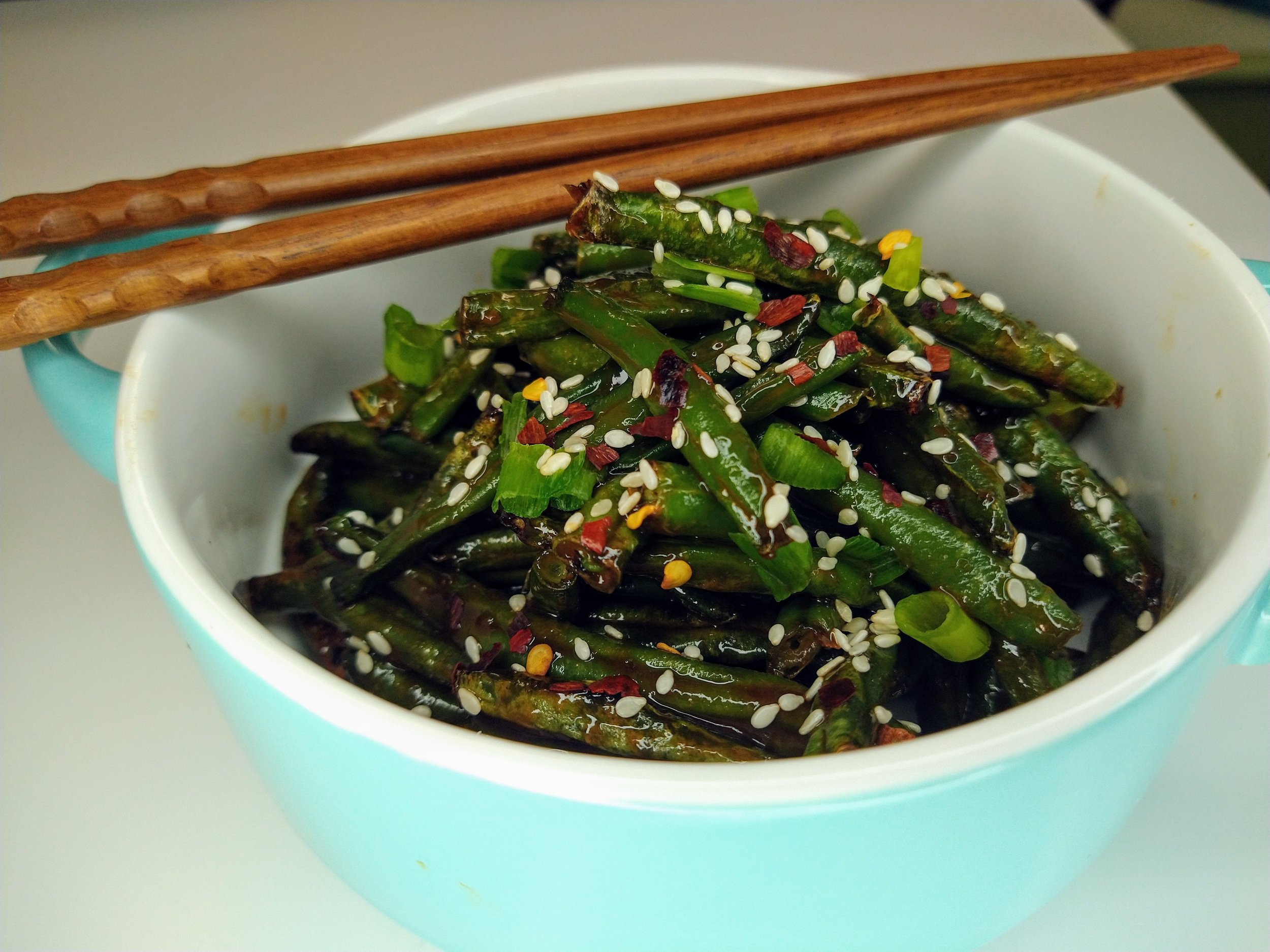Where have you bean all my life?
A Pinch of Salt
By Donna Marie Riani
I am in awe of all the things that grow and thrive here in Oregon. In writing this week's column I learned that Oregon is the fourth largest producer of green beans in the country, growing more than one million tons per year. I had no idea. Depending upon where you live, you probably call them by different names. Whether you call them green beans, string beans or snap peas, a bean by any other name would be as delicious.
There are two main types of green beans, bush and pole. They are very appropriately named as the bush variety grows on bushes that only get to be about one to two feet tall, while the pole variety can get upwards of 10 feet tall and need to be supported by a pole to keep them upright. In Western Oregon, green beans are planted around April and in Eastern Oregon they are planted around May, when the danger of frost has passed. They are planted as seeds and grow remarkably fast. From seedtime to harvest is about two months. The larger farms harvest the beans with machinery, while the smaller farms harvest by hand. Some of the green beans grown in Oregon are sold fresh but the majority of them are grown for freezing or canning.
Writing this week’s column brought to mind a client I used to cook for back in my personal chef days, who told me he loved green beans but wouldn’t eat them unless I removed the strings. He was in luck because I felt the same way. The string runs along the side of the green bean and can be peeled off by hand. No matter how much you cook the bean, the string never seems to soften and ends up being chewy. In movies, you will often see people seated in chairs at a table or on the front porch in a rocking chair with a big bucket of green beans, trimming them and removing the strings, one bean at a time. To be sure, it’s a time-consuming labor of love.
In terms of eating, I don’t think there’s anything you can’t do with a green bean. They can be boiled, baked, sautéed, roasted or grilled. This week's recipe is stir fried. Stir frying simply means to cook rapidly over high heat while stirring constantly to prevent the food from burning. A wok would be perfect for this but is not necessary. A large frying pan is fine. Stir frying is great because it keeps the beans tender crisp. I personally don’t love vegetables that are cooked until they are completely soft, I like them to still have a little crunch. A little note about the ginger in this recipe. You will notice it doesn’t say to peel the ginger. If the ginger is young, the skin is so thin that when you grate or mince it, it disappears into whatever you are cooking. Older ginger has thicker skin and will need to be peeled. This recipe is a great side dish, but it could easily be a main dish if you served it over rice. This is perfect if you’re pressed for time. It’s fast and flavorful.
Asian Green Bean Stir Fry
2 tablespoons olive oil
1 pound green beans, trimmed and strings removed
10 cloves garlic, quartered (don’t mince the garlic. It will end up burning by the time the beans are cooked)
1 inch piece of ginger, minced
1/4 to 1/2 teaspoon crushed red pepper flakes (it depends on how spicy you want your beans to be)
3/4 teaspoon black pepper
1/2 teaspoon sea salt
2 teaspoons rice wine vinegar
3 tablespoons hoisin sauce
2 green onions, thinly slice the white part and roughly chop the green part
2 teaspoons toasted sesame oil
Sesame seeds, to garnish
Place a large skillet or wok over medium heat and add the olive oil.
Add in the green beans, garlic, ginger and red pepper flakes. Stir frequently for about six to eight minutes, until the beans start to look charred and blistered.
Stir in the salt and pepper.
Next, stir in the vinegar and the hoisin sauce. Make sure everything is coated in the sauce.
Add in the green onions, white and green parts. Stir until the green onions start to look wilted.
Remove the pan from the heat and stir in the sesame oil. You want to do this off the heat so you don’t burn the sesame oil.
Place the green beans in a serving dish and sprinkle on as much of the sesame seeds as you like. The sesame seeds aren’t just for looks. They add a nutty flavor to the dish.

